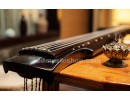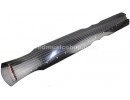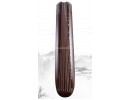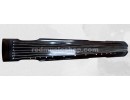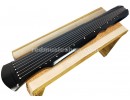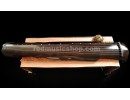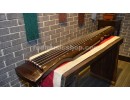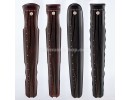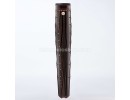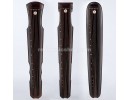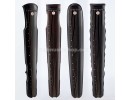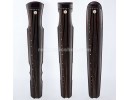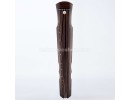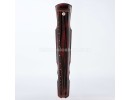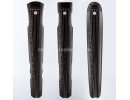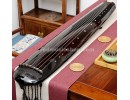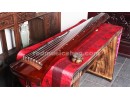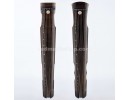Guqin
The guqin (simplified/traditional: 古琴; pinyin: gǔqín; Wade–Giles ku-ch'in; pronounced [kùtɕʰǐn] ( listen); literally "ancient stringed instrument") is a plucked seven-string Chinese musical instrument of the zither family. It has been played since ancient times, and has traditionally been favored by scholars and literati as an instrument of great subtlety and refinement, as highlighted by the quote "a gentleman does not part with his qin or se without good reason,"as well as being associated with the ancient Chinese philosopher Confucius. It is sometimes referred to by the Chinese as "the father of Chinese music" or "the instrument of the sages". The guqin is not to be confused with the guzheng, another Chinese long zither also without frets, but with moveable bridges under each string.
Traditionally, the instrument was simply referred to as qin (Wade–Giles ch'in) but by the twentieth century the term had come to be applied to many other musical instruments as well: the yangqin hammered dulcimer, the huqin family of bowed string instruments, and the Western piano are examples of this usage. The prefix "gu-" (meaning "ancient") was later added for clarification. Thus, the instrument is called "guqin" today. It can also be called qixianqin (lit. "seven-stringed instrument"). Because Robert Hans van Gulik's famous book about the qin is called The Lore of the Chinese Lute, the guqin is sometimes inaccurately called a lute. Other incorrect classifications, mainly from music compact discs, include "harp" or "table-harp".
The guqin is a very quiet instrument, with a range of about four octaves, and its open strings are tuned in the bass register. Its lowest pitch is about two octaves below middle C, or the lowest note on the cello. Sounds are produced by plucking open strings, stopped strings, and harmonics. The use of glissando—sliding tones—gives it a sound reminiscent of a pizzicato cello, fretless double bass or a slide guitar. The qin is also capable of a lot of harmonics, of which 91 are most commonly used and indicated by the dotted positions. By tradition the qin originally had five strings, but ancient qin-like instruments with 10 or more strings have been found. The modern form has been standardized for about two millennia.

